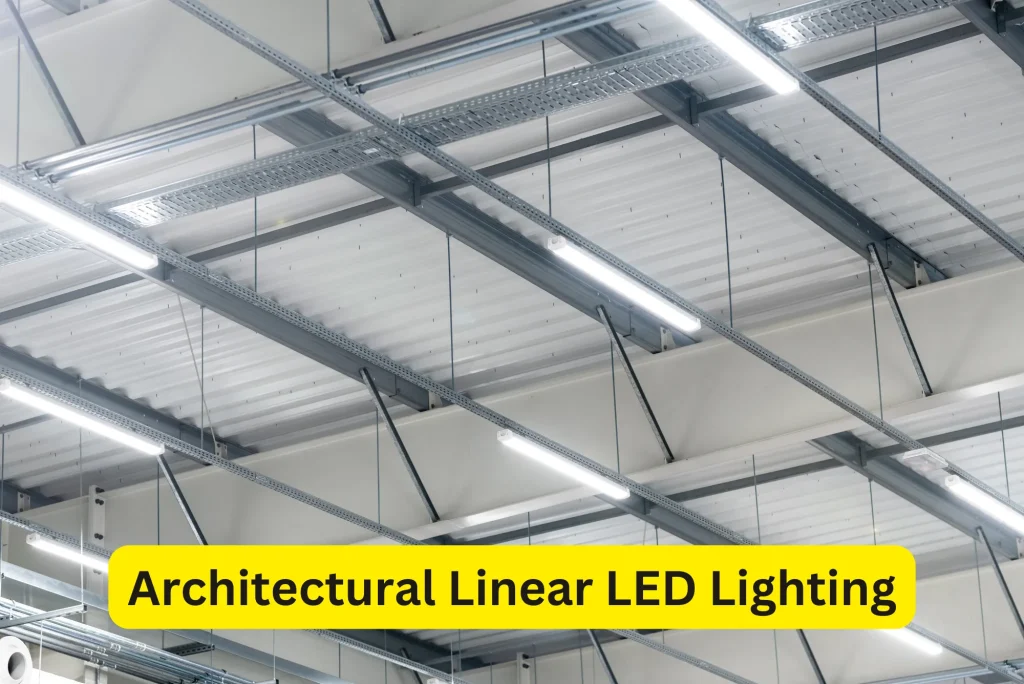In the realm of architectural design, lighting plays a pivotal role in defining spaces, enhancing aesthetics, and creating ambiance. Among the myriad lighting options available, Architectural Linear LED Lighting stands out for its versatility, energy efficiency, and aesthetic appeal. This article delves into the intricacies of Architectural Linear LED Lighting, exploring its history, features, applications, and future trends.
Types of Architectural Linear LED Lighting
Direct vs. Indirect Lighting:
Direct Lighting: Direct lighting fixtures emit light directly downward, creating a focused and efficient light source. These fixtures are often used in task lighting applications where strong, focused light is needed, such as over kitchen counters or workspaces.
Indirect Lighting: Indirect lighting fixtures direct light upwards or towards walls and ceilings, creating a soft, ambient glow. This type of lighting is often used to create a sense of spaciousness and to highlight architectural features, such as in cove lighting or wall-washing applications.
Wall-Mounted Linear Fixtures:
Wall-mounted linear fixtures are installed flush against walls or surfaces to provide both functional and decorative lighting. These fixtures can be used to create accent lighting, highlight textures, or illuminate pathways.

Suspended Linear Fixtures:
Suspended linear fixtures are mounted from the ceiling, typically in a row or pattern, to provide ambient or task lighting. These fixtures are often used in offices, conference rooms, and retail spaces to create a modern and uniform lighting design.
Cove Lighting:
Cove lighting fixtures are installed in a recessed area, such as a ceiling cove or valance, to provide indirect lighting. Cove lighting is commonly used to create a soft, diffused light that enhances the ambiance of a space and highlights architectural details.
Recessed Linear Lighting:
Recessed linear lighting fixtures are installed into ceilings, walls, or floors to provide a seamless and integrated lighting solution. These fixtures are often used in modern architectural designs to create clean lines and a minimalist aesthetic.
Key Features and Advantages
One of the primary advantages of Architectural Linear LED Lighting is its energy efficiency, leading to cost savings and environmental benefits. LED lights also offer flexibility in design and installation, as they can be easily integrated into architectural elements. Furthermore, LED lights have a long lifespan and require minimal maintenance, making them a practical choice for both residential and commercial applications.
Applications in Architecture
Architectural Linear LED Lighting finds extensive use in various architectural settings. In residential spaces, it can be used to highlight architectural features or create mood lighting. In commercial and office spaces, it provides bright, efficient lighting for work areas.

Retail environments benefit from the versatility of LED lighting to showcase products effectively. The hospitality industry uses LED lighting to create welcoming and comfortable atmospheres. Outdoor architectural lighting with LEDs enhances the aesthetics and safety of outdoor spaces.
Design Considerations
When designing with Architectural Linear LED Lighting, several factors must be considered. These include integrating the lighting with architectural elements, choosing the right light distribution and color temperature, selecting appropriate control and dimming options, and ensuring compatibility with smart lighting systems for future upgrades and enhancements.
Case Studies
Several architectural projects around the world showcase the transformative power of Architectural Linear LED Lighting. These projects demonstrate how LED lighting can enhance the beauty and functionality of spaces, from residential homes to commercial buildings and public spaces.
Future Trends
The future of Architectural Linear LED Lighting is bright, with ongoing advances in LED technology and design. These advancements include improved efficiency, better light quality, and more design options. The integration of LED lighting with IoT technologies is another exciting trend, allowing for smart lighting solutions that enhance user experience and energy efficiency.
Architectural Linear LED Lighting has revolutionized the way architects and designers approach lighting design. Its energy efficiency, versatility, and aesthetic appeal make it a preferred choice for modern architectural projects. As technology continues to advance, we can expect to see even more innovative uses of Architectural Linear LED Lighting, further enhancing the beauty and functionality of architectural spaces.












